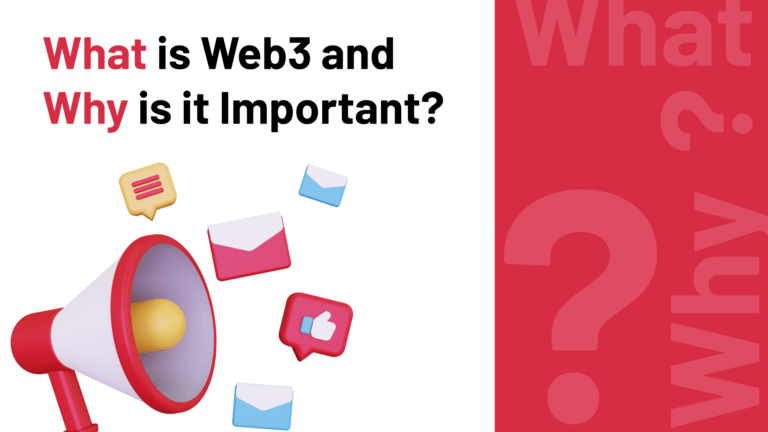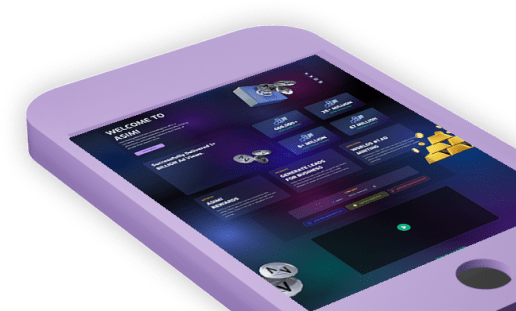
The internet has come a long way from Tim Berners-Lee’s original idea of static web pages that are connected by hyperlinks. This was originally known as the World Wide Web (or Web 1.0) and dates back to the early 90s. From around 2004, we began witnessing the genesis of the internet as we know it today; Web 2.0.
Now, you probably have heard of the next ‘internet sequel’ known as Web 3.0 (or Web3). What is Web3, and why is it getting so much attention?
What is Web3?
Web3 is the new kind of internet service that will allegedly be built on the blockchain. This will create some kind of an egalitarian internet where individual users have more power over their content and how the internet works as opposed to trusting that power to a few big companies.
With the web being powered by the blockchain and artificial intelligence, all information will be published on the public ledge where everyone can equally access it. The term Web 3.0 was coined in 2014 by Ethereum co-founder Gavin Wood.
Gavin felt that the web deserved more transparency and trust. According to him, we cannot get this trust by bestowing the internet to a few private companies. In a nutshell, Web1 allowed you to only read content on the net and do nothing much; Web2 now allows you to read and write content. Web3 will allow you to read, write and own your content.
The Problem with Web2
The current internet (Web2) has revolutionized life as we know it. Compared to about 20 years ago, so much has changed courtesy of the internet. Think of the economy, eCommerce, healthcare, governance… you name it.
So, what is wrong with Web2? Why do we need another kind of internet?
Here is the problem;
The current internet has given so much power to a few centralized entities – think of Facebook, Google, and Amazon. They are the ones that unilaterally decide the direction of the web; what should be allowed, and what should be excluded.
This kind of feudalism on the internet means that the people who use it don’t have power over their own content or activities. Once you upload your picture and address on Facebook, for example, they can do with it as they dim fit. It is not just yours anymore.
Your content is monetized without you benefiting in any way. Web3 aims to eliminate middlemen and gatekeepers and give back control of internet content to their rightful owners.
How? Let’s look at some of the features of Web3 and how it hopes to decentralize the internet.
Web 3.0 Features
At its core, Web3 is a lot of things crumpled into one name. Decentralizing the internet will take many forms with the main goal of bringing power and ownership back to the people.
Here are some features and principles that Web3 will adopt:
- It will be decentralized: The whole idea of Web3 is to create a decentralized internet that takes power away from a few entities and give it back to the users.
- It will be trustless: This means that the internet will be operated and run by blockchain-based economic mechanics instead of trusting it to third-parties.
- It will be permissionless: This means that internet users will have equal access and ownership of the resources.
- It will run on native payments: Web3 will mostly use cryptocurrencies as a form of payment instead of the current mainstream banks and payment processors.
Of course, there is more that Web3 can achieve, according to its proponents. These are just a few of the highlights.
So Why is Web3 Important?
Web3 brings up some very crucial concerns around the current Web 2.0 internet. That’s why there several reasons why this idea might be important.
Let’s look at a few of these reasons below:
- It promotes ownership: The idea behind Web3 is to see that online content is democratized and decentralized using blockchain. This way, the middleman will be eliminated, and users can directly benefit from their content and online activities by earning tokens that have an actual monetary value.
- It fosters privacy: Decentralizing the web will ensure that users can control the privacy and identity of their personal information. No third party would exclusively have access to this information and do with it as they please.
- It is more secure: Using the tamperproof blockchain technology will bolster the security of internet data so that it is not taken advantage of by a few individuals.
- It creates opportunities for new innovations: Since projects on the Web3 internet will be open-source (much like the current blockchain), it creates an opportunity for users to create projects on top of already compact technologies. This kind of composability will ensure that more innovative projects are created fast enough.
Conclusion
The jury is still out as to whether the Web3 project will see the light of day. This idea is still largely theoretical, with a few holes to fill. For once, there is the concern of a steep learning curve needed for people to learn about blockchain before they can even begin to comprehend the idea of Web3.
So, it might take a pretty long time before this idea comes to pass.
Read More:
